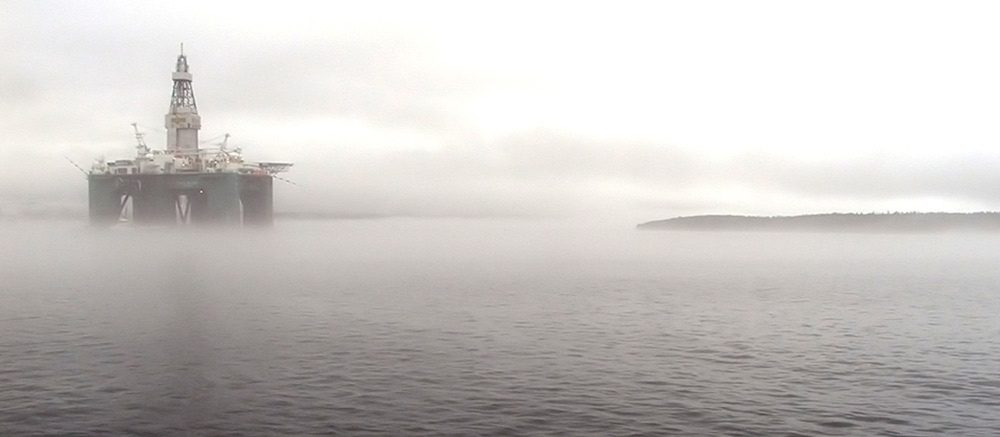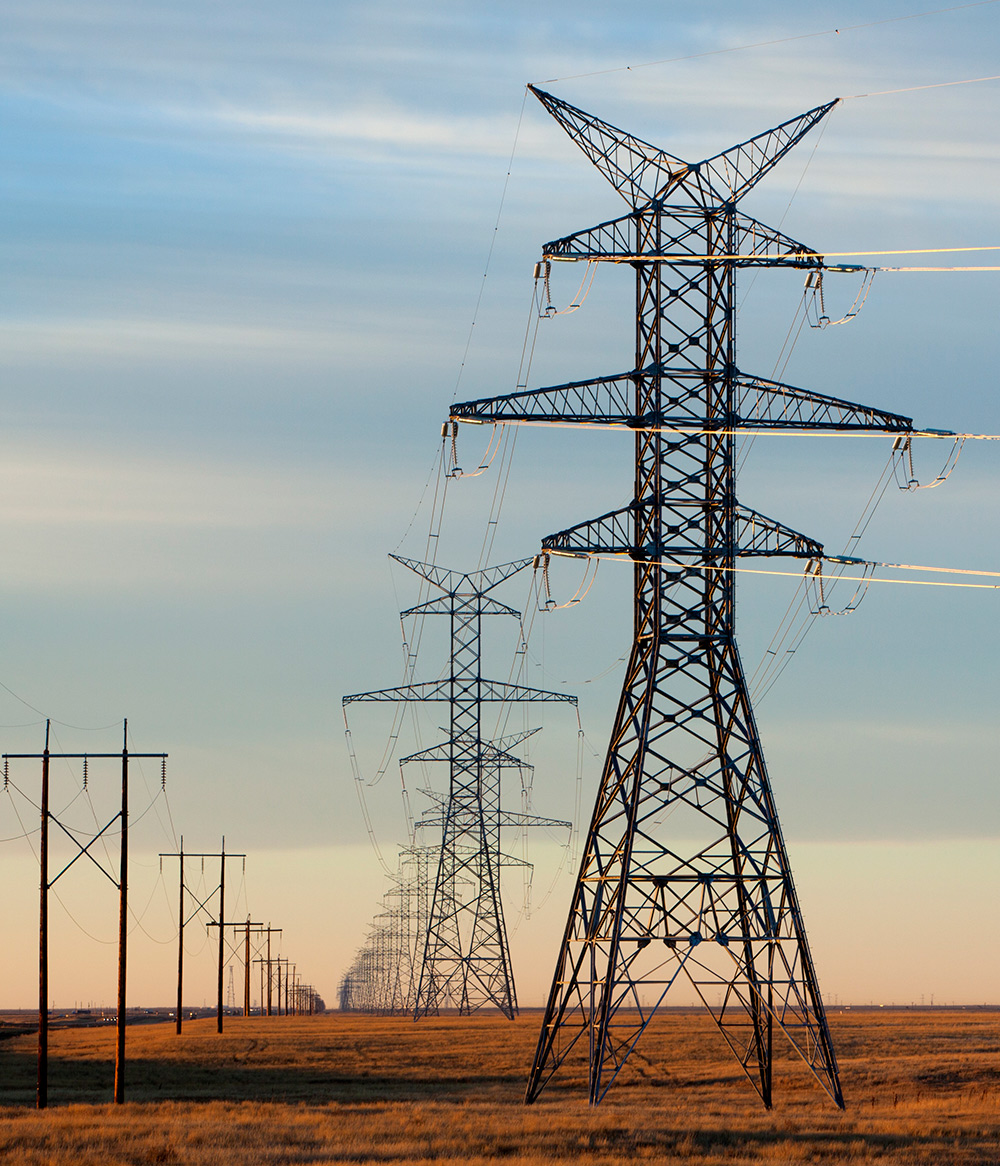Energy Adjudication
The NEB makes decisions or recommendations to the Governor in Council (GIC) on applications, which include environmental assessments, using processes that are fair, transparent, timely and accessible. These applications pertain to pipelines and associated facilities, international power lines, tolls and tariffs, energy exports and imports, and oil and gas exploration and drilling in certain northern and offshore areas of Canada.
The NEB regulates Canada’s federal energy infrastructure over its complete lifecycle. During the design and applications assessment phase of projects, we review and impose conditions. Companies must satisfy the NEB that they are fulfilling the conditions set in application review, and that they are taking every available action to anticipate, prevent, and mitigate any potential harms associated with their activities. When a project has reached the end of its useful life, we review abandonment applications to ensure that it is abandoned in a safe and environmentally responsible manner.
Our Commitment:
Energy adjudication processes are fair, timely, transparent and accessible.
Adjudication Activity in 2018-19:
-
 745
745
Applications Received -
 748
748
Decisions or Recommendations Issued -
 41
41
Oral Indigenous Knowledge Evidence Sessions Held -
 214
214
Participants in Oral Indigenous Knowledge Evidence Sessions -
 More than
More than
$8.5 M
in Participant Funding Awarded
Performance Results – Energy Adjudication
Percentage of adjudication decisions overturned on judicial appeal related to procedural fairness.
- Target 0%
- Results
2017-18 0% - Results
2018-19 0*%
Percentage of surveyed participants who indicate that adjudication processes are transparent.
- Target 75%
- Results
2017-18 88% - Results
2018-19 73%
Percentage of adjudication decisions and recommendations that are made within legislated time limits and service standards.
- Target 100%
- Results
2017-18 100% - Results
2018-19 100%
Percentage of surveyed participant funding recipients who agree that participant funding enabled their participation in an adjudication process.
- Target 90%
- Results
2017-18 94% - Results
2018-19 100%
* AS DISCUSSED IN THE NEXT SECTION, THE FEDERAL COURT OF APPEAL SET ASIDE THE GIC APPROVAL OF THE TRANS MOUNTAIN EXPANSION PROJECT. THE FEDERAL COURT OF APPEAL’S DECISION WAS NOT MADE ON PROCEDURAL FAIRNESS GROUNDS.
Improving Accessibility and Transparency
The NEB is constantly looking for feedback from the public and Indigenous communities on its adjudicative processes. Clarity and transparency of process supports meaningful participation through developing a shared understanding of the review process, and reducing barriers to participation. We use a variety of tools to collect data, including post-hearing surveys, but we recognize that more innovative tools are needed to collect better data to further inform process improvements.
Over 2018–19 we invested in looking at new mechanisms and tools to collect external feedback on our processes and more transparently share information. For example, participant feedback indicates that accessing and finding documents in REGDOCS, the NEB’s online document repository, can be challenging. In response the NEB has partnered with the non-profit group Code for Canada to pilot REGDOCs improvement initiative, aimed at making the information in the repository more accessible to users.
Streamlining Participant Funding Program Applications

The NEB continually refines its PFP processes to provide eligible hearing participants with improved service. Starting with the NOVA Gas Transmission Ltd. – Northwest Mainline Loop (Boundary Lake North Section) in March 2018, the NEB piloted a streamlined PFP application process to reduce burden on applicants and provide funding assurance more quickly. The percentage of applicants who are satisfied with the service provided by the NEB in its PFP remains above target at 89%. This year, funding decisions were provided within eight days of a complete funding application or application deadline, greatly surpassing the 30–day service standard.
Alternative Dispute Resolution (ADR): Local Issues, Local Solutions

Hearing processes are not the only way in which the NEB fulfills its mandate to help balance the interests of all Canadians in the stewardship of pipelines and energy development. By the time a company submits an application to the Board, many concerns have already been addressed, but some stakeholders may still have concerns that have not been resolved. In these situations, ADR can be used to help balance different interests or reduce the number of issues that may require adjudication by the Board.
The ADR process can lead to positive outcomes because it provides participants with a way to collaborate on finding solutions, and can be applied specifically to local issues. Landowners, in particular, find ADR beneficial in that it provides them with an informal forum where their unique contexts and concerns can be heard. Through ADR, pipeline companies are better able to establish relationships with landowners, communities and stakeholders and avoid potential future conflicts around issues like pipeline maintenance. Non-project specific engagement activities may also allow for opportunities to gather feedback from individuals and communities about their experiences with hearing processes, which will inform how the NEB shapes processes in the future.
Major Applications
Trans Mountain Expansion Project Reconsideration
In May 2016, after an approximately two–year regulatory review, the NEB issued its recommendation that the Governor in Council (GIC) approve the Trans Mountain Expansion Project (TMEP).
In November 2016, the GIC approved the Project and related regulatory instruments authorizing the construction and operation of the Project, subject to 157 conditions. Project-related marine shipping was considered as part of that review and report, under the NEB Act – not under the Canadian Environmental Assessment Act (CEAA) 2012.
In August 2018, the Federal Court of Appeal in Tsleil– Waututh Nation v. Canada (Attorney General) set aside the GIC approval of the TMEP. The GIC subsequently directed the Board to conduct a Reconsideration of the TMEP Report within 155 days, taking into account the environmental effects of Project–related marine shipping in view of the requirements of the CEAA 2012, and the adverse effects on species at risk in view of any requirements of section 79 of the Species At Risk Act.
Prior to issuing a Hearing Order, the Board sought public comments on the scope of the environmental assessment and List of Issues, and the design of the hearing process. A total of $4,981,760 in participant funding was offered to 69 recipients, 82% of which was offered to Indigenous intervenors. The hearing process involved 118 intervenors (52 of which were Indigenous intervenors), and eight federal government department intervenors. Any member of the public was able to file a letter of comment, and many took the opportunity to do so. The process was concluded in the GIC’s prescribed deadline of 155 days.
During the Reconsideration, the Board took a broader look at the environmental effects of Project-related marine shipping, and at the fact that marine shipping extends beyond the NEBs regulatory authorities. With that in mind, the Board made broader recommendations to the GIC including action the GIC could take to off–set the effects of the TMEP. The Board also noted that the Indigenous Advisory and Monitoring Committee (IAMC) for the Project is well placed to help facilitate effective and ongoing Indigenous participation in Project-related Salish Sea monitoring and follow-up measures.
Abandonment of the NEB-regulated portions of the Sable Offshore Energy Project and the Deep Panuke Offshore Project
The NEB currently regulates two sub-sea pipelines off the coast of Nova Scotia. In March 2018, ExxonMobil applied to abandon the NEB-regulated portions of the Sable Offshore Energy Project, including the Goldboro Gas Plant and the approximately 200–kilometre–long gathering pipeline.
Encana applied to abandon the NEB–regulated Deep Panuke Pipeline and associated onshore facilities, in June 2018. The Deep Panuke Pipeline runs approximately 175 km from an offshore production platform to an interconnection with the Maritimes & Northeast Pipeline facilities in Goldboro, NS.
Both projects reached a stage of naturally declining production in 2018.
The NEB considered both applications concurrently. During the hearings, the NEB gathered input from Indigenous Peoples, federal and provincial departments, industry, and local municipalities.
The NEB approved both applications for abandonment in early May 2019. Though they have stopped operating, the NEB’s jurisdiction over the pipelines will continue, providing on–going oversight to protect public safety and the environment.

Offshore drilling platform
Pipeline Abandonment Funding
At the end of the useful life of a pipeline, companies must apply to the Board for approval to abandon the facility. The Board must conduct a public hearing and consider the views of directly affected parties in determining if and how a pipeline should be abandoned. The Board maintains jurisdiction over an abandoned pipeline and a company retains responsibility of a pipeline if it is abandoned in place.
NEB-regulated companies need to file abandonment cost estimates with the NEB, which is the amount of funding that needs to be available to abandon a pipeline at the end of its useful life. This estimate also includes a provision for post–abandonment activities intended to cover unforeseen events that may occur after the abandonment is completed. Funds are set aside in secure financial vehicles that can only be accessed for abandonment purposes.
The underlying principle is that pipeline companies, and not landowners or governments, are liable for the costs and financing of safe and environmentally responsible pipeline abandonment.
In 2016, the Board commenced a five-year review of companies’ abandonment cost estimates. The Board concluded its review of the largest pipeline companies’ abandonment cost estimates and released a Letter of Decision in 2018. The Board is currently reviewing the abandonment cost estimates of the rest of NEB–regulated pipeline companies.
Manitoba – Minnesota Transmission Project

Manitoba Hydro applied to the NEB in 2016 for an authorization to build and operate a 500 kV international power line. The line would run 213 kilometres from the Winnipeg area to the US border in southeastern Manitoba. Nearly half of the proposed route is located within existing transmission line corridors.
As part of the hearing, the Board heard Oral Traditional Evidence from Indigenous participants and considered evidence from the applicant, 17 intervenors and two letters of comment. To support participation in the hearing, the Board’s PFP approved 16 applications for funding totaling $1,197,967.
In November 2018, the NEB recommended that Governor in Council approve the Manitoba-Minnesota Transmission Project, subject to 28 project-specific conditions. These conditions relate to consultation with Indigenous Peoples, the environment, engineering standards, safety, and emergency response.
Working with Indigenous Intervenors to Co-develop a Consultation Approach
NOVA Gas Transmission Limited (NGTL), a wholly owned subsidiary of Trans Canada, filed an application for the 2021 NGTL System Expansion Project in February 2018.
The project crosses the traditional territory of dozens of Indigenous Peoples. After reviewing the comments received on the proposed hearing process, the Board decided to co-develop a consultation approach, in partnership with Indigenous intervenors.
In December 2018, the NEB announced that it would hold a conference to discuss how Indigenous intervenors could meaningfully participate in this hearing. Participants were asked to provide written comments on specific questions and topics.
The conference was held in January 2019. More than a dozen Indigenous communities were represented and they were joined by staff from three companies, the NEB and Natural Resources Canada.
The conference was divided into three general discussions: the Board’s consultation approach; the sharing of Oral Indigenous Knowledge evidence; and discussion about oral cross-examination, final argument, and other topics related to the hearing process.
One of the comments the Board heard was that the NEB’s hearing room can be intimidating and that holding parts of the hearing in Indigenous communities would make the process more engaging and meaningful for Indigenous participants.
After considering these comments, the Board decided to hold the Calgary session of Oral Indigenous Knowledge at the Grey Eagle Resort and Casino, on the Tsuut’ina Nation lands. The Board also heard Oral Indigenous Knowledge in Grande Prairie at the end of April 2019.
The Final Report of the conference highlighted a number of changes to the 2021 NGTL hearing process, including extending certain deadlines, adding a second round of written questioning and changing the process for cross-examination.


